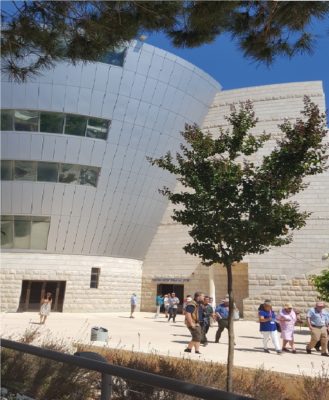I did it! My trip of a lifetime to Israel came to pass this summer—10 days that met my high expectations of the country I’ve been dreaming of visiting for a long time. My determination to go see for myself only intensified as the leftist mobs try hard to turn the West’s back on this only liberal democracy in the Middle East. Naturally, our group of some 50 pro-Israel Canadians, Americans, Brits and Aussies was welcomed with open arms by this remarkable people—a people full of the joy of life, having babies, building communities and planning for the future in the face of so much hate.
But the Jews are used to antisemitism—disguised as antiZionism, anti-imperialism, anti anything & everything that will harm Jews while pretending to have their welfare in mind—because now they have a homeland that they can—and will—defend to the last Israeli standing.
Monday, June 25th/Tuesday, June 26th
Thoreen and I boarded the plane to Toronto, then to Tel Aviv and landed in the Holy Land at 11:18 am on the 26th. With smooth passage through customs and a short drive into the city, we arrived at the Dan Tel Aviv at noon; we opened the curtains in our beachfront room and went “Ahhh…”: The gorgeous blue Mediterranean and pale beige sands were alive with people—swimming, walking, jogging, cycling, picnicking—enjoying the sun, the sand and the sea.
The sight rejuvenated us, so down we went for a walk along the beach. The sand was fine-grained and soft and the water warm and inviting, with people playing in its deep shallows. We argued the merits & demerits of proportional representation as the wind blew our drowsiness away and tangled our hair. Back up to the room we went to shower and repack before going down for a drink in the bar and dinner in the hotel restaurant.
Wednesday, June 27th
Jaffa. Showered, dressed and breakfasted, we were on the bus to meet the Gold group of our tour at their hotel and have a short orientation session with the tour leaders: Dr. Ron Wexler, guides Berenice and Nola, and the Rebel Media personalities. Our first stop was at Jaffa, the old city adjacent to Tel Aviv with a mixed Jewish and Arab population that has been living together for centuries. When friction comes, it almost always comes from the outside, Berenice told us. Old and new—the old port along the Mediterranean with bustling Tel Aviv in the background—make a picture-perfect vista, and a template for what could be in this ancient land.
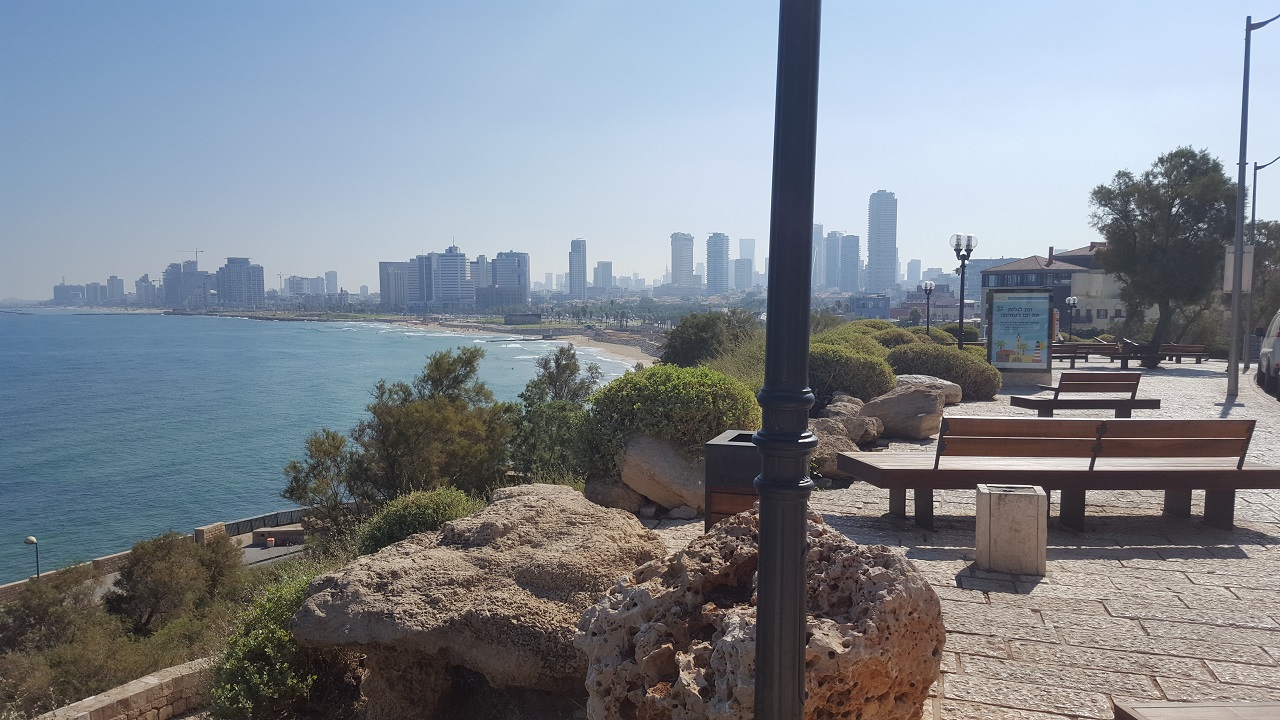
Jaffa park along the Mediterranean, with Tel Aviv in the background.
Next, the West Bank. Or the occupied territories in pro-Arab speak. The only clear demarcation of what is ‘occupied’ and what is Arab is the former is green and productive, the latter beige and arid. This is part of Samaria and Judea, ancient homelands of the Jews long before the local Arabs appeared in these parts. But historical truth gets short shrift in the Left’s ranks, as taken to the nth degree by their Soviet brethren Lenin and Stalin.
properly described as a thriving city with an impressive industrial complex—employing both Israelis and Arabs at wages double or triple what the latter are paid for any work in the Arab-controlled areas of this land—on its western edge and a brand new university on its eastern side. The university has rapidly established itself as a leader in cyber security: an impressive example of turning adversity—surrounded by enemies trying to subvert its electronic communications to destroy Israel—into opportunity and excelling at it.
We saw this time and time again as we traveled around this tiny country: The energy, vision, hard work and optimism of Israelis put to shame the lethargy, grievance, indolence and pessimism of the Arabs; they turn obstacles into stepping stones and defeat danger by ingenuity and vigilance.
The fence. The security barrier is another example of this. Pejoratively called the Wall by the Left, it is 95% fence and 5% wall, the latter in Jerusalem where the Arabs have tried their damnedest to wreak havoc with the city’s Jewish inhabitants and its global visitors. The fence is not lethal, just sensitive: If someone touches it, two soldiers will be there within two minutes and a whole military response team within five minutes.
Caesaria. To finish off a long first day, our visit at Caesaria, an ancient city going back to Roman times, was cut short with the excavations site closing at 6 pm. Too bad, but you can only do so much in one day.
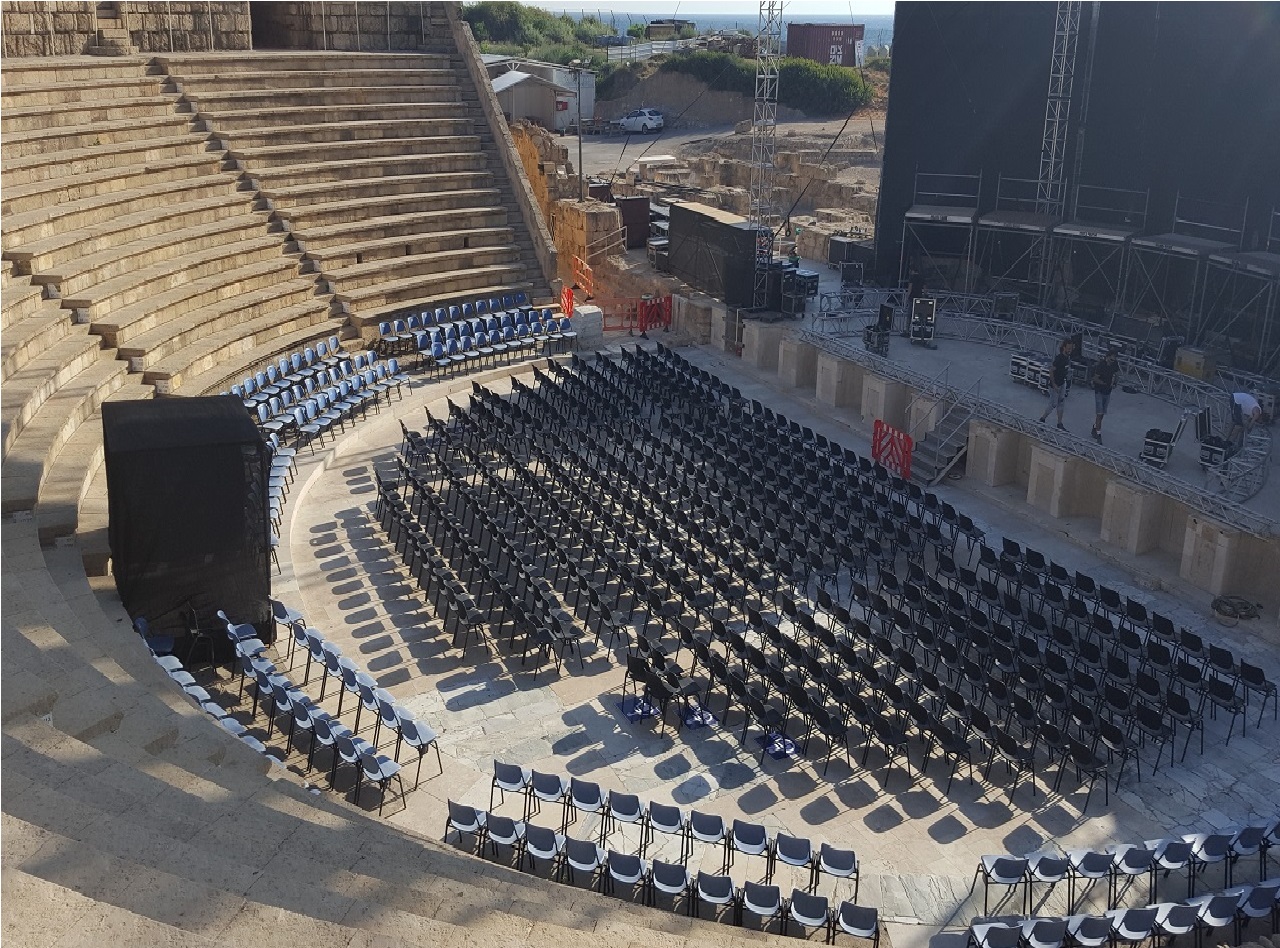
Amphitheatre being prepared for a concert that evening.
Thursday, June 28th
Sderot. Out the door, we went, with our luggage, our hats and our bottles of water prepared for what turned out to be an even longer day than planned. First to Sderot, a city in the 15-second zone of getting to a shelter when the sirens sound because—quelle surprise—it rubs up against the Gaza strip where Hamas likes to use its people as cannon fodder. And because of Hamas barbarism, friends of Sderot built an indoor playground. Impressive, but sad because playing outdoors is one of the joys of childhood. The mayor of Sderot showed us two short films, one on the destruction and terror of a Hamas attack, and the other one on the resilience of its people and future suburbs springing up for its growing population—an admirable response of life and joy to the death and destruction of their neighbours.
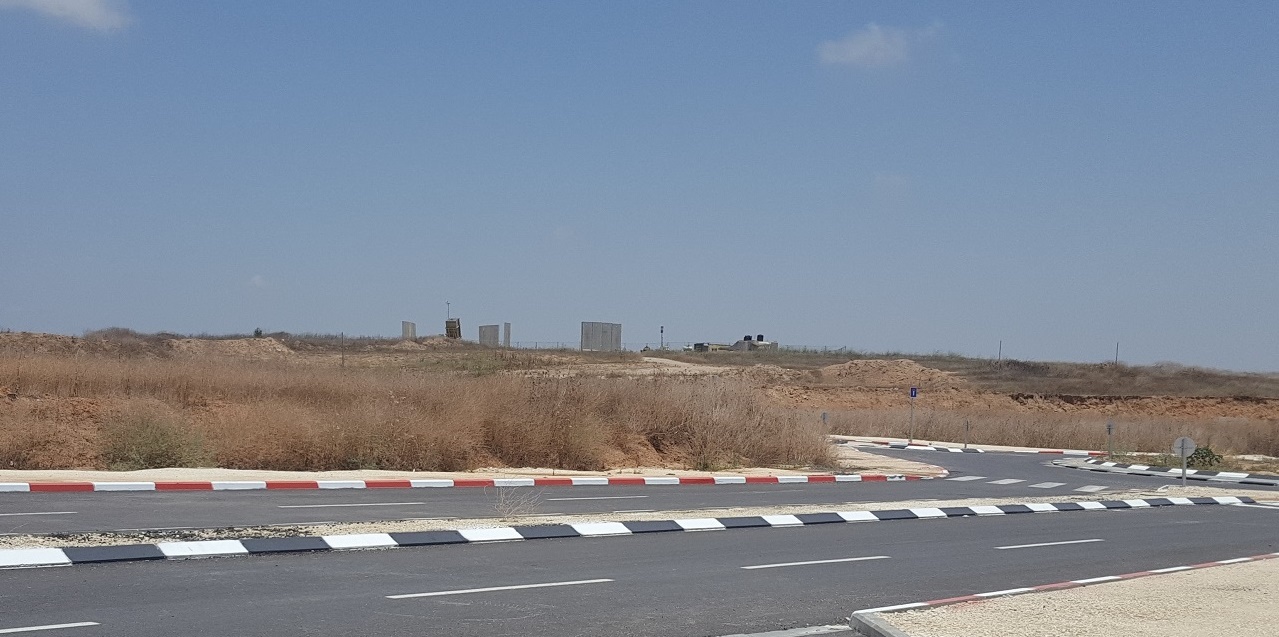
The little building in the middle—yes, that’s the formidable Iron Dome.
Gaza. Then we walked up a hill that overlooks Gaza. This is a pretty part of the country with lots of trees
and bushes, with brilliant bougainvillea colouring the landscape. On this side, there are crops, interrupted occasionally with a burnt-out patch from the Arabs’ balloons of fire, and greenhouses; on the Gaza side, there isn’t evidence of much activity except destructive activity.
And the Iron Dome, an innocuous edifice, oversees and stymies most of the destruction until Hamas figures out another way to kill the Jews. If they put half the effort into creating something that they do into destroying their neighbours, the Gazans would be many times better off than their fellow Arabs.
Be’er Sheva. Luck and connections (Ron Wexler’s) arranged an experience for our group that thrilled, uplifted and amazed—an invitation to join Israel Defence Forces (IDF) families in attending the graduation ceremony for the IDF pilots. Our first stop was visiting a display of flying materiél, from the primitive planes of its birth in 1948 to the supersonic fighter planes of today. After some light refreshment, we trooped to the stands to applaud the class of 2018 as they—with three females in the class of about 30—received their wings from Benjamin Netanyahu and Avidgor Liberman, prime minister and defence minister of Israel.
What fine young people the pilots are! Berenice told us the folklore has been updated: A Jewish mother’s fondest wish to brag about, “My son, the doctor,” has been replaced in Israel by, “My son, the IDF pilot.” It is very difficult to get accepted and continues very difficult to keep up with the training and studies in the three-year program—and a candidate can be dismissed from the program right up until the day of graduation! In fact, a couple had been dismissed just a week before this graduation—how sad for the young person and for his/her family.
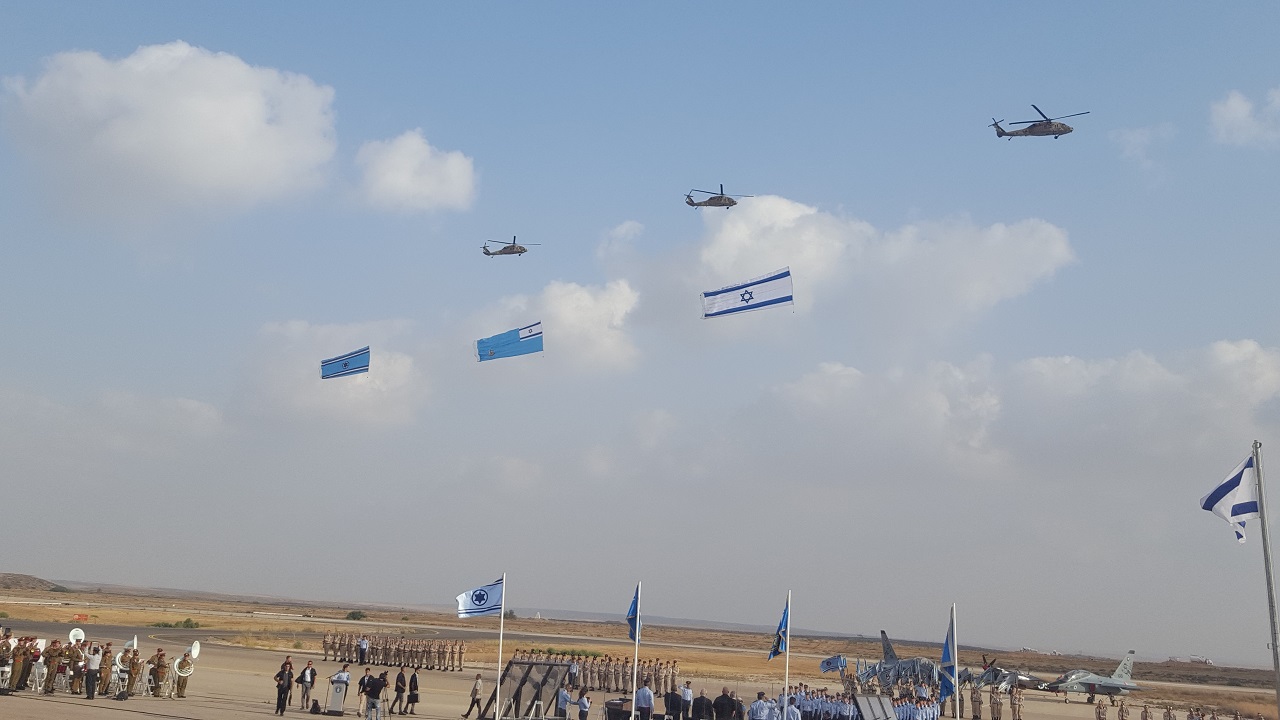
Helicopters & flags at the graduation ceremony.
The perfect evening—banks of white clouds shaded us from the fierce Israeli sun and a playful breeze off the Mediterranean cooled us as we watched this awesome display of power and patriotism. And it ended with a magnificent bang: The IDF’s F-35s roared at and over the stands, splitting our eardrums and bringing tears to our eyes and a lump in our throats. What prowess for the tiny country that could!
Friday, June 29th
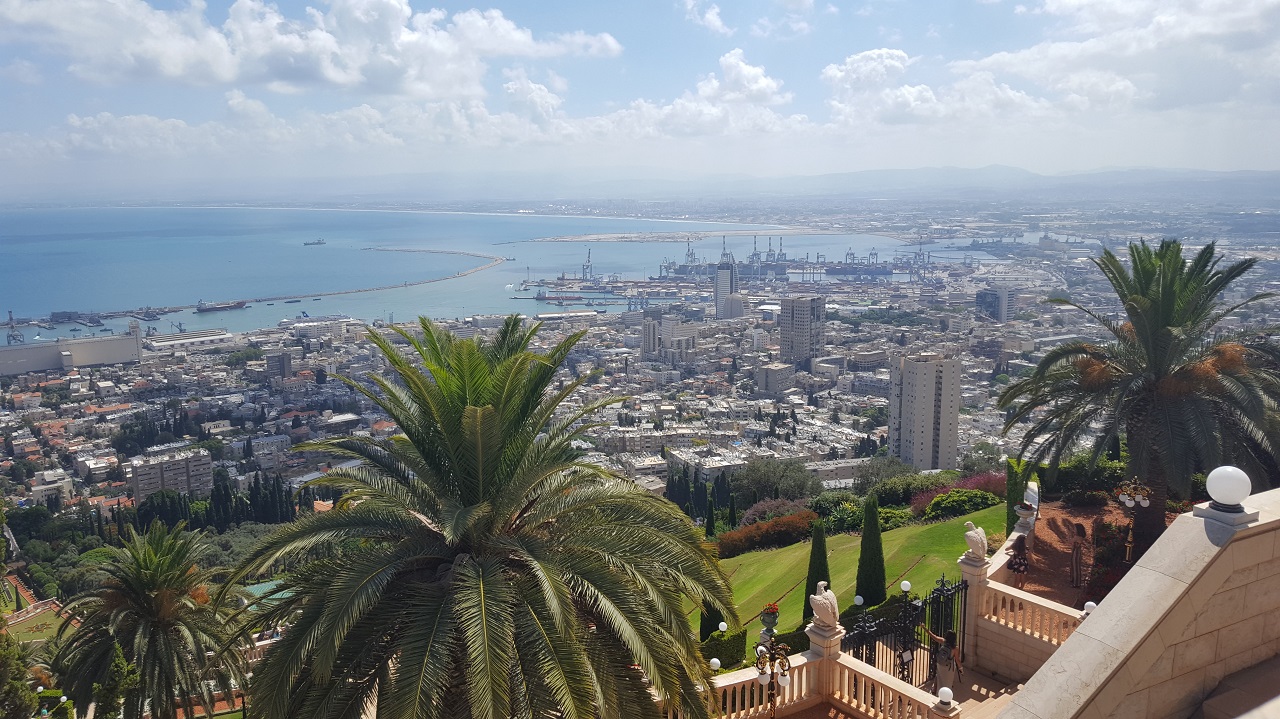
Haifa from the Bahai Memorial Gardens.
Haifa. That perfect evening led to the long drive north—almost the length of the country—then a scant five hours’ sleep in our luxurious Haifa hotel followed by a swift morning visit to the Bahai Memorial Gardens for a panoramic view of the city. Haifa’s harbour sprawls in a huge semicircle and its commercial traffic is terrific at this major entry portal to the Middle East. Oh, we would have liked to linger and explore, but we had places to go and people to see on Day 3 of our tour of Israel.
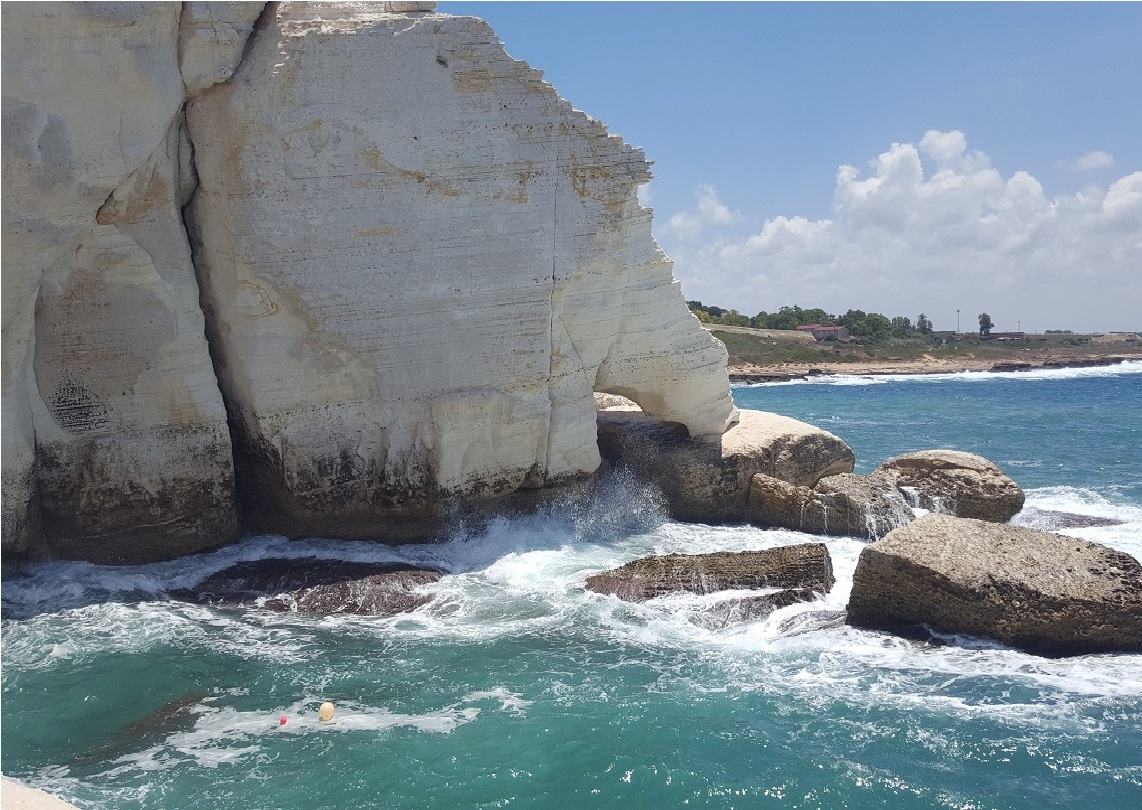
The grotto’s aquamarine & rushing waters.
Rosh Hanikra. So back on the bus and off to Rosh Hanikra on the Israel-Lebanon border, where we dropped down on the gondola to the grotto and its rushing waters. (Much of it was underground, and my claustrophobia dampened my enjoyment of the spectacle.)
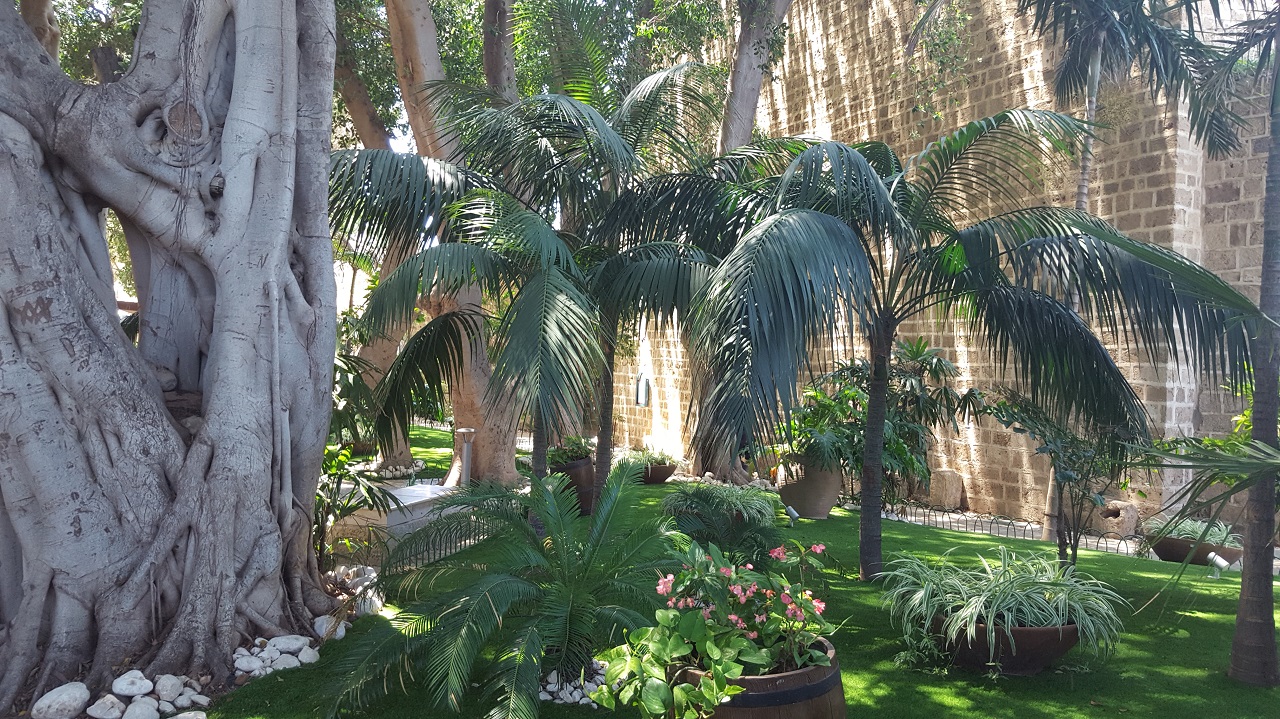
The Garden of Eden at entrance to Acre.
Acre. Part 2 of this day’s adventure: Acre, the best preserved Crusader seaport in the world. The grand halls and massive fortifications displayed the power and glory of Christian Crusaders in their era of 1000-1200, with a Garden of Eden welcoming visitors at the entrance.
Tiberias & Shabbat. Then to Tiberias and the Hotel Leonardo for a glass of wine before Shabbat, an evening of abundance: bowls & bowls of salads, platters & platters of meats, vegetables of every colour & kind, desserts to tempt the diner to finish off the feast with a swallow of sweetness. But the most amazing sight to these Western eyes was the abundance of children—young mothers & fathers with three, four, five children under the age of 5, the babies in arms, the toddlers venturing out a few yards from mom, dad, grandma & grandma, and the 3-, 4- and 5-year olds running around the dining room having the time of their lives. Talk about faith in the future and the joy of being alive!
Saturday, June 30th
An early start to see the Jesus boat found in the Sea of Galilee. It has been, with a great deal of patience and ingenuity, lifted from the bottom mud, painstakingly reassembled and displayed in a purpose-built room. The boat has been dated as 2,000 years old, the time of Jesus, and fits the description in the Bible of the fishing boats plying the Sea of Galilee.
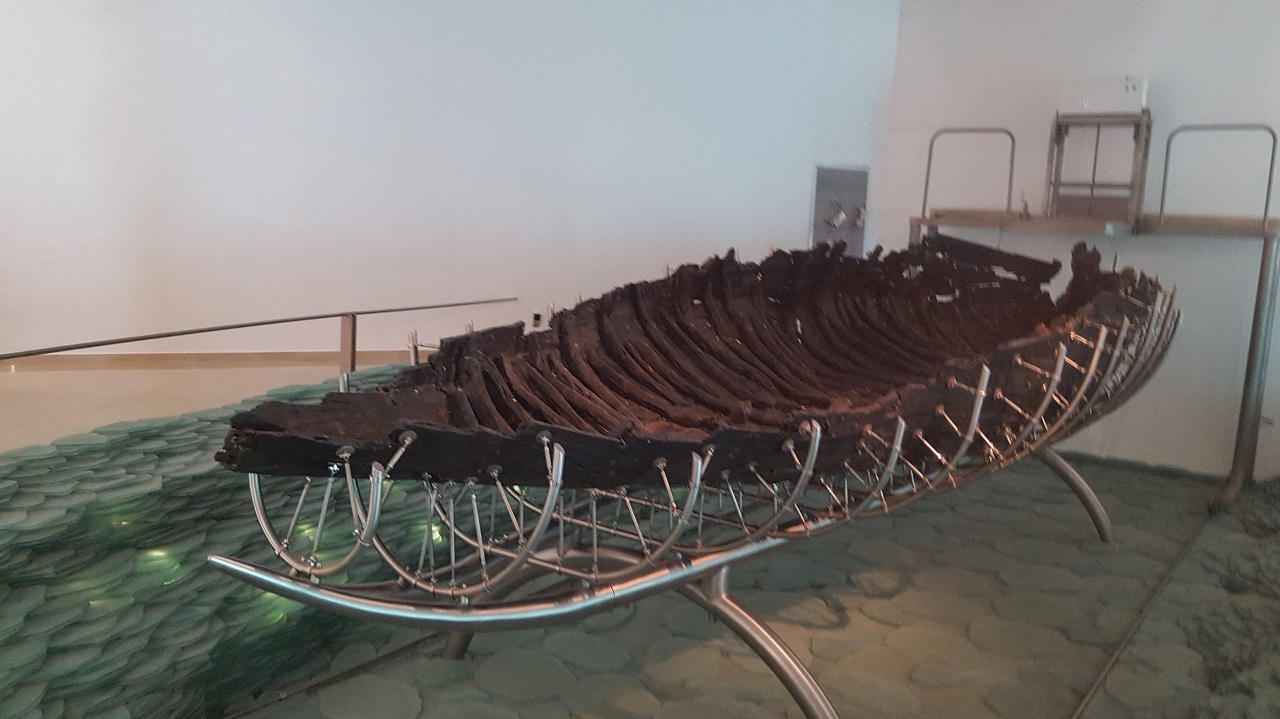
The Jesus boat.
Misgav Am. This kibbutz, the most northern kibbutz in Israel, is surrounded on three sides by Lebanon with a panoramic view from its perch on the top of the mountain. The first occupation of its 60-some residents is farming; their second, defending Israel alongside the IDF from its frontline army base. There Hezbollah lurks in the their big houses—built and paid for by Iran—with their yellow flags and glassless windows, the better to shoot at Israeli in their long days of doing nothing. And it’s just as clear where Israel ends and Lebanon begins: Israel is green and productive with crops and industry; Lebanon is devoid of farms or industry, with its Hezbollah residents funded by Iran to do nothing but try to disrupt Jewish life and enterprise.
In fact this contrast is evident throughout Israel: green and productive on Israeli lands; arid and barren on Arab lands. But housing accommodation in Arab cities where most of their citizens work in Israel for wages three to four times as much as any comparable Arabic enterprises is modern with a variety of houses, apartments, etc. to choose from. And these Arabs exhibit the common hypocrisy: bitch about Israel occupation of their ancestral lands, while clinging to their Israeli jobs and services—biting the hand that feeds you in spades!
Golan Heights. Time for lunch, this time in a Druze village in the Golan Heights. On offer is the usual smorgasbord of Middle Eastern food at 40 shekels without meat, 60 shekels with meat, served quickly and efficiently. Lunch is followed by a movie, a visit to the battle site, Valley of Tears, for the war with Syria in 1974, and then on to an IDF bunker on the top of Mount Ben Tal. This observation site overlooks Syria and the Quneitra Israel-Syria border crossing.
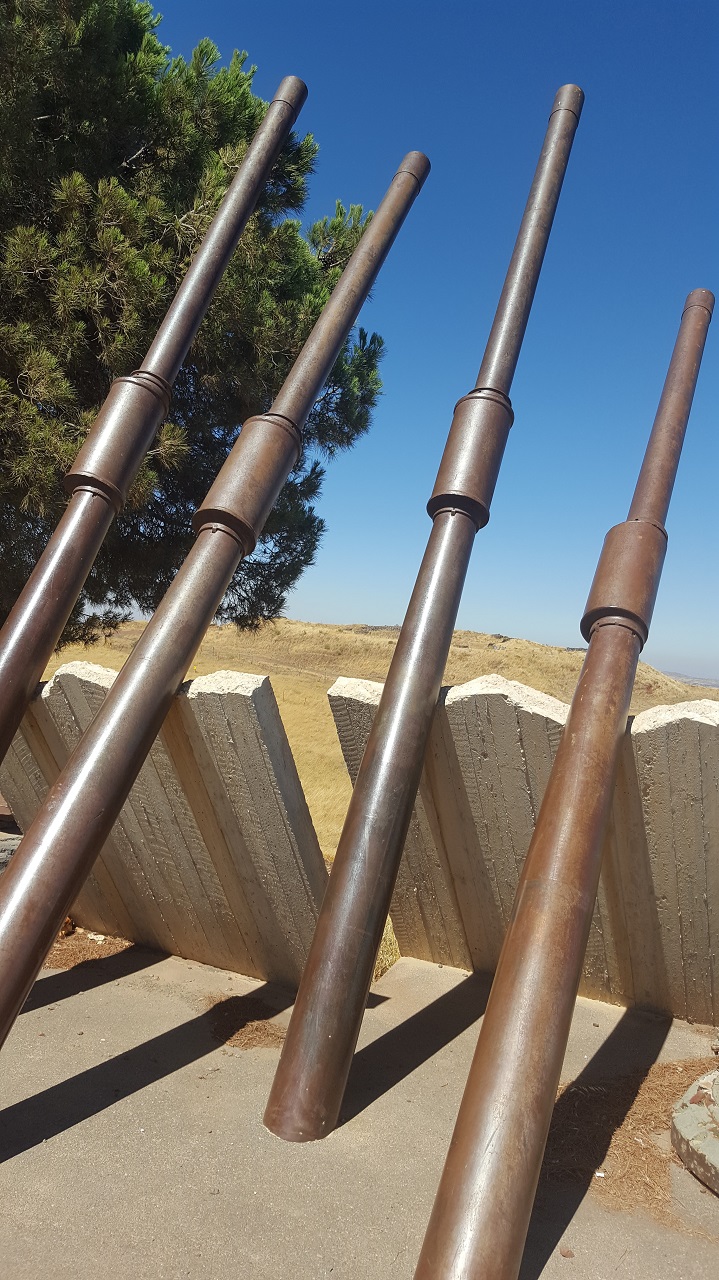
The guns of the Valley of Tears.

The hydrangeas of Coffee Anan.
The sun beat down, the wind blew and the hydrangeas bloomed at the Coffee Anan (play on words of Kofi Anan, the late secretary-general of the United Nothing, as Israeli refer to it) as we wandered around, aware that we were being observed by friends and enemies and secure in our knowledge that the IDF were protecting us as they had throughout our trip.
Magdala. The afternoon being still young (about 4 o’clock), the decision was made to stop at the village of Mary Magdalene where the remains of a synagogue from the time of Jesus Christ was discovered in 2009. At this crossroads of Jewish and Christian history, the Roman Catholic Church, which is overseeing the excavations of the synagogue and its environs, has built a breathtaking church. Its serene simplicity honours the women in the Bible and commemorates Jesus preaching from the boat on the Sea of Galilee. A truly inspiring place.
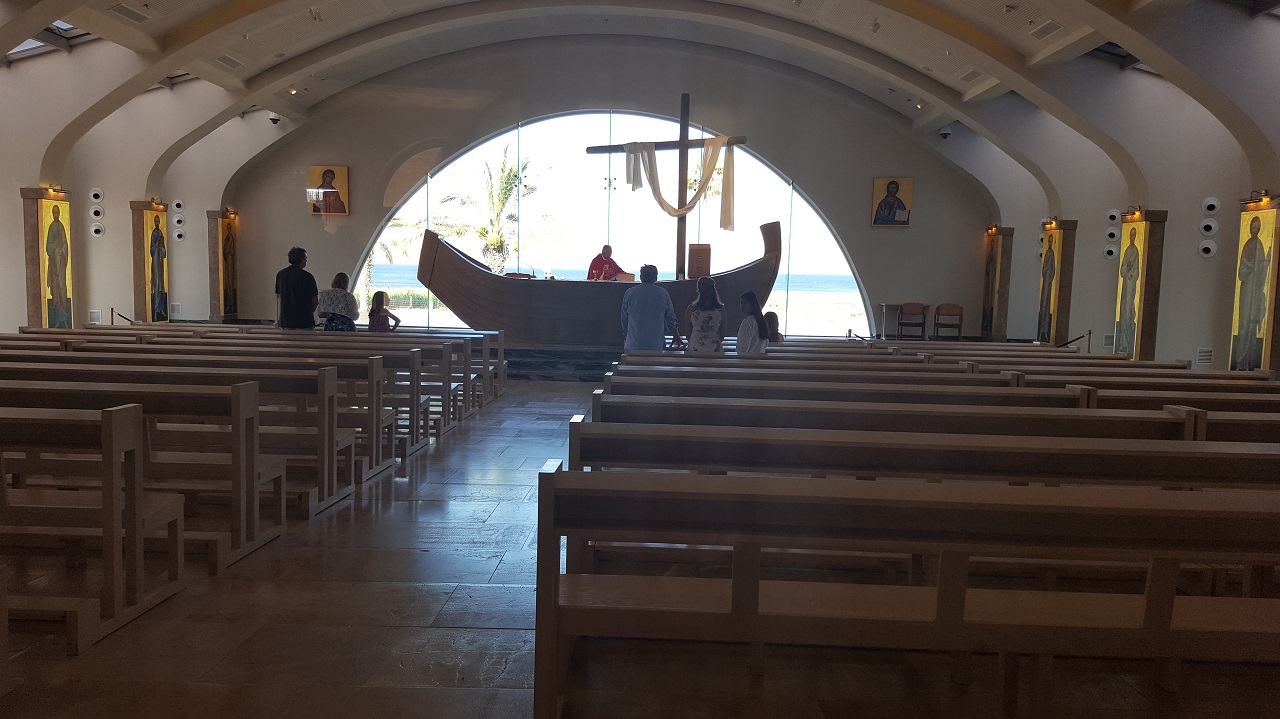
Duc in Altum commemorating the public life of Jesus.
Sunday, July 1st
Jordan Gate. Another day, another early departure, another full day of adventures. The first adventure was at Jordan Gate, a large-scale industrial project of commercial cooperation between Jordan and Israel with industrial development and work on the Jordan side of the River Jordan and supporting services on the Israel side. Israel is building the bridge. The project, based on the vision of Shimon Peres, has been on the drawing boards for over 20 years and is finally coming to fruition in spite of the ongoing unrest in the area.
The concept is capitalistic: a money-making venture that benefits Jordan by providing well-paying employment for its many unemployed (but still cheaper than employing Israelis for the same work) and that benefits Israel by opening up Middle Eastern and global markets to Israel. And it will promote peace in the region—a win-win project indeed. Yes, it could stall in light of the ongoing chaos in Syria, but it is typically Israeli to continue in the face of the odds, sometimes overwhelming odds, against the land that could. Impressive.
(And to prove the instability of that part of the world, that same evening the unrest at the border escalated with Syrian refugees streaming across the Jordanian border. While the project manager was describing the project to us, we could hear the loud booms of bombs dropping just behind the site development on the Jordan side.)
Samaria & Judea. Back in the bus to head south through the desert flats and mountains, passing the wadi dividing Samaria and Judea, and on into the hills of Judea.
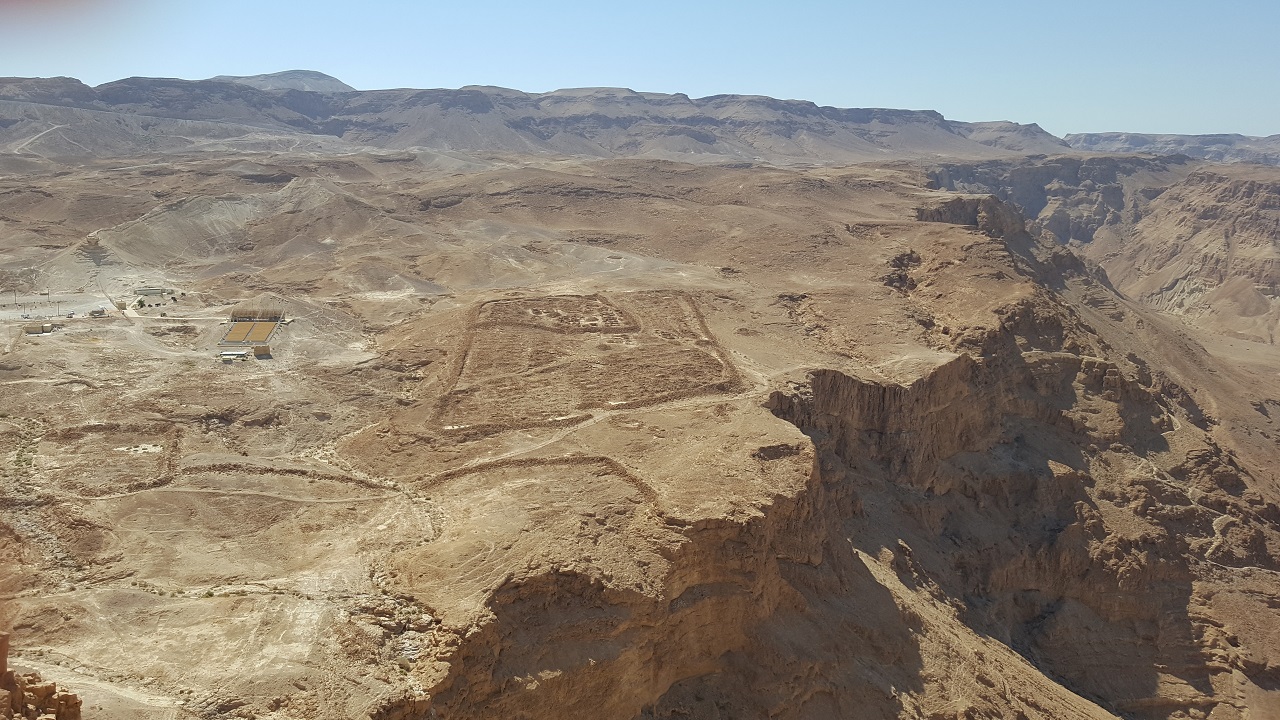
Wadi dividing Samaria & Judea.
We stopped for lunch at Qumran, famous for its caves where the Dead Sea Scrolls were found, and then traveled to Masada. This place on the top of a mountain was the site of a famous battle that took
place between 37 and 31 BC where some 950 indigenous Jewish people chose to commit suicide rather than surrender to the Roman army. On the one hand, the courage to prefer death to slavery is admirable; on the other hand, the cult of defiance is at odds with modern-day Israeli accommodation and compromise.
And it was hot on that mountaintop! 51°C was showing on our cellphones, an experience I will not willingly ever repeat. Ditto for the Dead Sea, which proved rather yukky for those who ventured in; those of us who didn’t enjoyed a cold drink in the shade.
The day ended perfectly. Our bus emerged from the tunnel on Route 1, and we exclaimed with delight at the holy city: Jerusalem was spread out before us in all its glory, with the Temple Mount and the Golden Dome close enough to almost touch them.
Monday-Wednesday, Jerusalem
The Inbal Jerusalem Hotel, our Platinum group’s address in the centre of the city, was the perfect place to come home to at the end of another full day immersed in the sights and sounds of this ancient, storied place.
July 2nd. Our first morning was spent visiting the security barrier at four critical points, led by Danny Tirza, the IDF Colonel (now retired) who was primarily responsible for its design and installation. One of these points was the wall, directly across from the ‘refugee camps’—white apartment buildings supplied with electricity and utilities by Israel—where Palestinian terrorists spend their days plotting how to kill Jews. And it has been effective, thwarting the majority of the best laid plans of the terrorist mice.
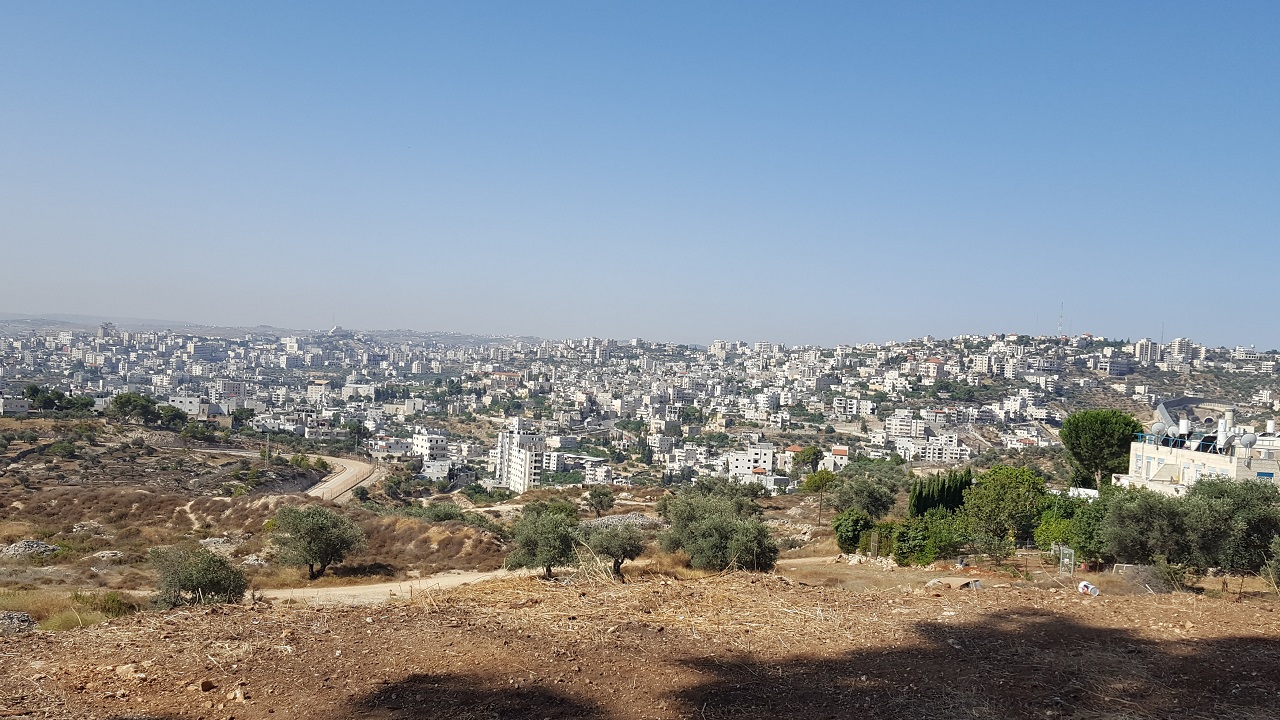
Overlooking the ‘refugee camps’ in Jerusalem.
After lunch at Rachel’s Well, we were privileged to visit the Knesset and sit in the gallery to observe the parliament in session—the only place in the Middle East where you will witness liberal democracy.
It is abhorrent that my fellow citizens in Canada and Western liberal democracies celebrate the autocracy of Arabic regimes and vilify Israel. It enrages me that my sister citizens, so-called feminists, rant and rave about every perceived slight in our Western countries, and yet not a murmur of condemnation escapes their lips as the ayatollahs and imams dress women in ‘letterboxes’ (in Boris Johnson’ wonderful description) and treat them as chattel.
July 3rd. Our group of 11 arrive at the Temple Mount at 8 o’clock, and are through security and onto the site in the space of about 10 minutes. The sun is high, but the air is still fresh and cool. No crowds on the huge square, just us and a few other small groups, monitored by friendly teams of IDF soldiers and autocratic Muslim guards.
The proportions of the Temple Mount, as laid out by the Jews many centuries ago, are harmonious and human, so the space is grand, but inviting. The Golden Dome, however, is an interloper on this sacred Judaic space, and the control of the Temple Mount by the Muslims is a tear in the fabric of its history. But I am happy to report this control is being renegotiated as we speak, so the tear may soon be mended.
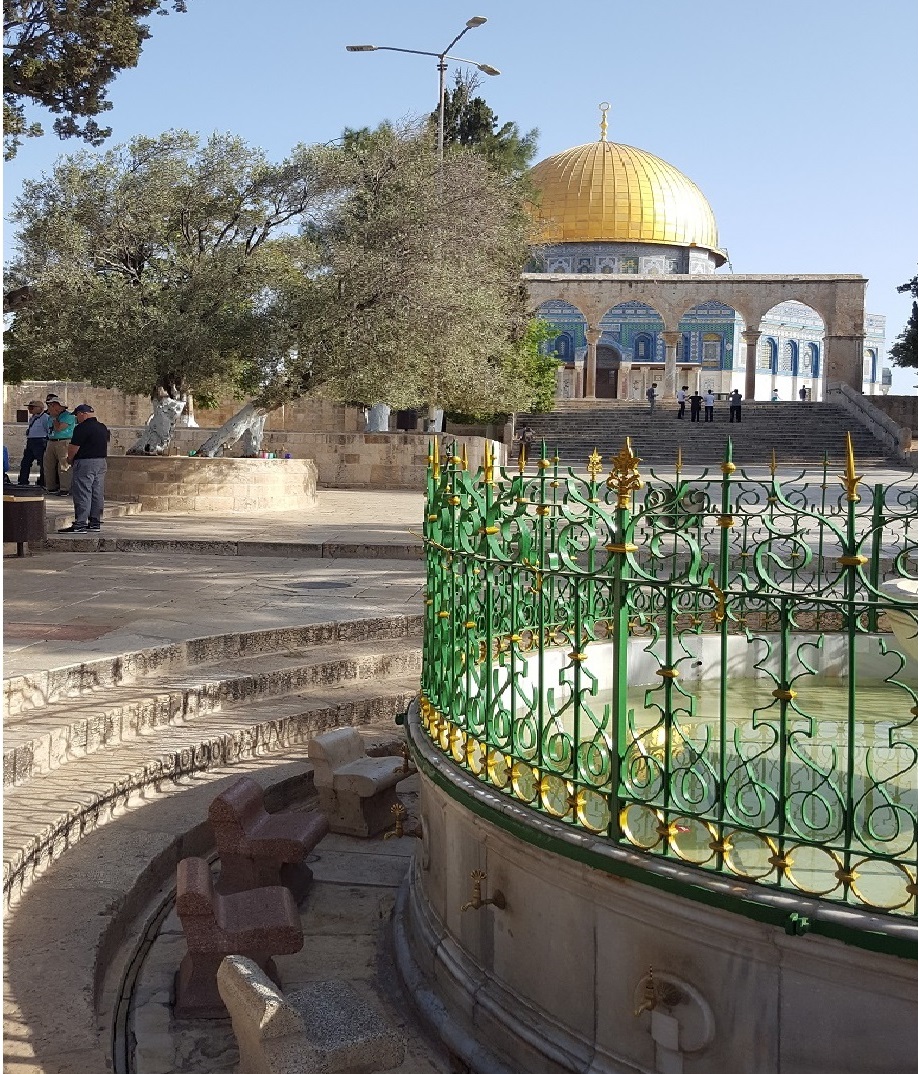
We then travel to the Mount of Olives with the Garden of Gethsemane on its slopes, the city of Jerusalem spread out in the valley and the Temple Mount gleaming in the distance. After our group photo with this perfect backdrop, we travel to the Old City where Berenice whisks us through the Muslim Quarter, the Jewish Quarter, the Christian Quarter and the Armenian Quarter at a brisk pace and a deluge of information. (Berenice never seemed to be walking fast, but Thoreen and I found we had to almost trot to keep up to her; and god forbid you stopped for a closer look at something!)
After lunch, while waiting for the presentation on the Clarion Project to begin, I had the delightful opportunity to make someone happy: Introduce a young man to someone he and his family back in New York admired, Ezra Levant of The Rebel. As they chatted and took a picture together, which immediately was sent off to his family, the cockles of my heart were warmed indeed.
July 4th. Our final day in the Holy Land began with a trip to Latrun, an IDF armoured corps site with a display of tanks from Israel’s first in 1948 to the latest behemoth of 2018. Rebel Media laid a wreath at the Wall of Names, soldiers killed in the perpetual battles against Israeli foes. To get there, we drove through Jerusalem Forest—every tree in this lovely green
glade planted by man, an inspiring and cool idea brought to reality by Jewish dreamers.
The second item on our list was a visit to the model of the Second Temple, followed by a visit to the Shrine of the Book. This purpose-built museum provides the perfect structure to house and display the Dead Sea Scrolls: dim, cool and reverent.
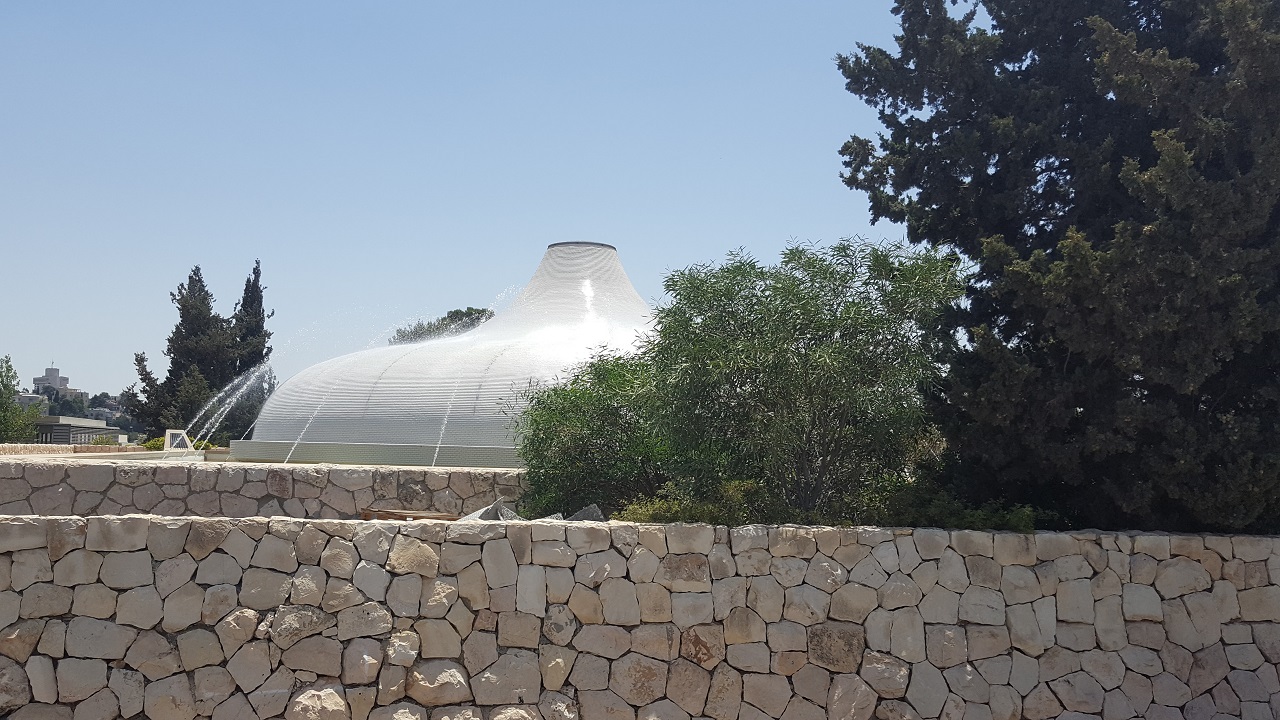
Shrine of the Book, for the Dead Sea Scrolls.
Yad Vashem. The final item on the day’s agenda and on our tour of Israel was Yad Vashem, the Holocaust Museum. Everything one can say is inadequate. Everything one can feel is inadequate. Everything one can do is inadequate. That amount of evil is overwhelming.
But we must never stop condemning antisemitism and fight back against its resurgent on the Left—the useful idiots that Lenin gleefully identified in the West and his communist descendants exploited and continue to exploit in our academies and bureaucracies.
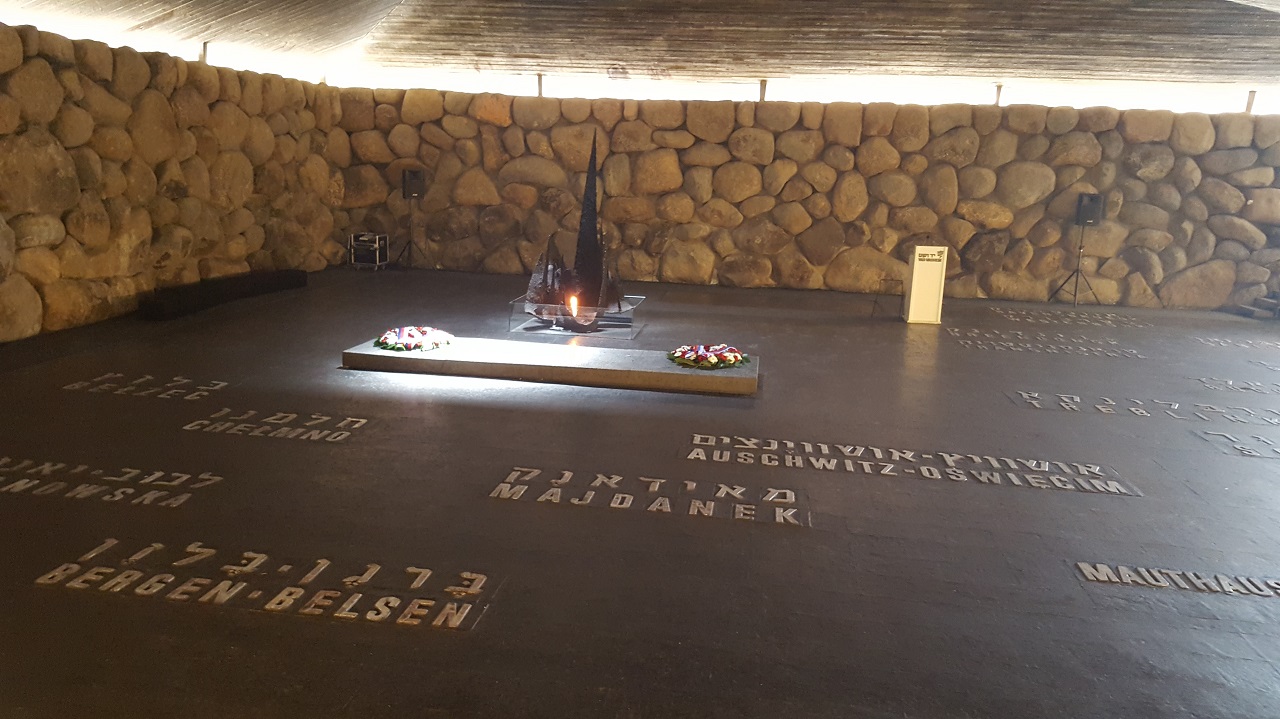
Never again.
At the end of the day
We ended the day and this memorable trip with a celebratory dinner, pledging our continued praise and support for Israel and its joyous people. We had traveled the length and breadth of this remarkable country. We were welcomed at IDF quarters and battle sites, a project site and at the Knesset, a kibbutz and a Druze village—but were unwelcome in PLO or Hamas territory. Wherever we went, we walked right in, not surprising in the places off the beaten track, but surprising and wonderful in the storied sites: the Temple Mount, Masada, the Shrine of the Book, Magdala, Yad Vashem. With no crowds to contend with, our Platinum group of 11 could see the sights and hear Berenice’s detailed commentary for an extraordinary experience of an extraordinary country.
Alas, the chasm between Israeli and Arabs summarized in the 1935 Peel Report still seems to apply:
“Almost a million Arabs are in strife, open or latent, with some 400,000 Jews. There is no common ground between them. The Arab community is predominately Asiatic in character, the Jewish community predominately European. They differ in religion and language. Their cultural and social life, their ways of thought and conduct, are as incompatible as their national aspirations.” (as quoted in God, Guns and Israel by Jill Hamilton, 2004)
But hope springs eternal in this eternal land, and the Israelis persist in pursuing solutions to the strife. And, I repeat, the Jews are used to antisemitism—disguised as antiZionism, anti-imperialism, anti anything & everything that will harm Jews while pretending to have their welfare in mind—because now they have a homeland that they can—and will—defend to the last Israeli standing. We can only hope that the Palestinians finally accept their ancient neighbour and become creators—not destroyers—of their own modern state.

